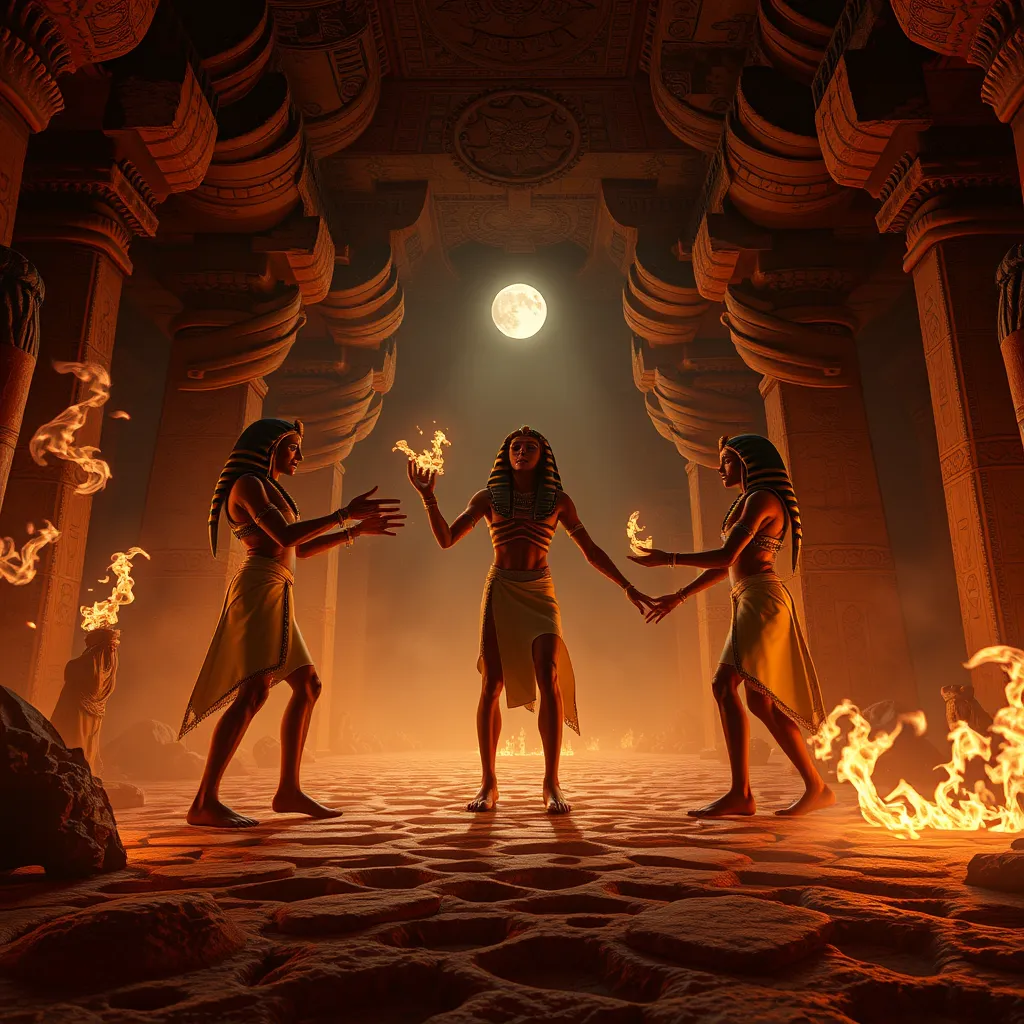The Dance of the Dead: The Soul’s Journey Through the Underworld and the Trials of the Afterlife
I. Introduction
The concept of the afterlife has intrigued humanity for millennia, offering a glimpse into what lies beyond death. Various cultures have developed their own interpretations, weaving intricate stories and beliefs that reflect their values and understanding of existence. From the ancient Egyptians with their elaborate burial practices to the modern views influenced by science and spirituality, the afterlife remains a profound subject of exploration.
This article delves into the soul’s journey and the trials it faces in the afterlife, examining how different cultures perceive this journey and the significance it holds. Understanding these themes helps us appreciate the diverse beliefs surrounding death and the meaning we attribute to life itself.
II. Historical Perspectives on the Afterlife
Throughout history, civilizations have constructed elaborate narratives around the afterlife, rooted in their cultural and spiritual contexts. Some key historical perspectives include:
- Ancient Egyptians: They believed in a detailed afterlife where the heart of the deceased was weighed against the feather of Ma’at, symbolizing truth and justice. Success led to eternal life in the Field of Reeds.
- Greeks: The Greeks envisioned the afterlife as a realm ruled by Hades, where souls would face judgment. The righteous would find their place in Elysium, while the wicked suffered in Tartarus.
- Mayans: In Mayan culture, the afterlife was viewed as a continuation of life on Earth, with the underworld, Xibalba, being a place of trials and challenges.
As societies evolved, so did their concepts of the afterlife. The emergence of religious movements and philosophical thought influenced how people perceived death, often intertwining mythology with moral teachings.
III. The Underworld: A Cross-Cultural Exploration
Despite the diversity of beliefs, certain themes in underworld depictions resonate across cultures. Common elements include:
- Judgment: Many traditions feature a judgment phase where souls face consequences based on their earthly behavior.
- Trials: The journey often includes tests that reflect the soul’s virtues or transgressions.
- Guides: Deities or spiritual beings often assist souls in navigating the underworld.
Notable underworlds include:
- Hades: The Greek underworld, a place of both reward and punishment.
- Duat: The Egyptian afterlife realm, where the deceased navigated various challenges.
- Yomi: In Japanese mythology, the land of the dead where souls reside.
The symbolism of the underworld varies, often representing transformation, renewal, and the cyclical nature of life and death.
IV. The Soul’s Journey: Stages and Trials
The journey of the soul post-death is depicted through various stages, often characterized by trials and tribulations. Common descriptions include:
- Separation: The moment of death where the soul departs the body.
- Transition: A phase where the soul travels to the afterlife, sometimes guided by spiritual beings.
- Judgment: A critical stage where the soul’s deeds are assessed, determining its fate.
Trials faced in the afterlife often reflect a soul’s earthly actions. For instance:
- In Egyptian belief, navigating through the Duat involved overcoming challenges and answering questions from deities.
- In Christianity, the concept of purgatory serves as a trial for souls seeking redemption.
Judgment can involve various consequences, from eternal damnation to paradise, depending on the cultural context.
V. The Dance of the Dead: Rituals and Practices
Rituals surrounding death and the afterlife are integral to many cultures, reflecting their beliefs and respect for the deceased. Notable aspects include:
- Traditional rituals: These can include funerals, memorials, and ceremonies designed to honor the dead and guide their souls.
- Dance and music: Many cultures incorporate dance and music into their rituals, celebrating the lives of the departed and helping the living process their grief.
Examples of cultural celebrations include:
- Día de los Muertos: A Mexican holiday honoring deceased loved ones, featuring altars, offerings, and vibrant festivities.
- Obon: A Japanese festival honoring ancestors, where lanterns are lit to guide spirits back to their resting places.
VI. Modern Interpretations of the Afterlife
In today’s world, views on death and the afterlife have evolved, influenced by secular thought, scientific advancements, and spiritual exploration. Contemporary perspectives include:
- Secular humanism: Some individuals embrace a non-religious view, focusing on the impact of life rather than what comes after.
- Spirituality: Many seek personal meaning in the afterlife, often drawing from various religious and philosophical traditions.
Literature and media significantly contribute to modern beliefs about the afterlife, shaping narratives that resonate with contemporary audiences. Psychological perspectives also play a role, addressing how beliefs about death influence mental health and coping mechanisms.
VII. The Impact of the Afterlife Beliefs on Daily Life
Beliefs in the afterlife profoundly shape human behavior and societal norms. Key influences include:
- Moral and ethical behavior: Many cultures base their moral frameworks on the consequences that follow death, instilling a sense of accountability.
- Grief and mourning practices: Cultural rituals around death help communities process loss and maintain connections with the deceased.
The interplay between hope and fear surrounding the afterlife affects human experience, prompting individuals to reflect on their beliefs and the implications for their lives.
VIII. Conclusion
This exploration of the soul’s journey through the underworld and the trials of the afterlife reveals the rich tapestry of human beliefs and practices. Each culture offers unique insights into the significance of death and what follows, reflecting their values and perspectives on life.
As we reflect on these insights, it becomes evident that the theme of the afterlife holds cultural significance, shaping our understanding of existence and the human experience. We invite readers to consider their beliefs regarding death and the afterlife, recognizing the profound implications these beliefs have on their lives.




